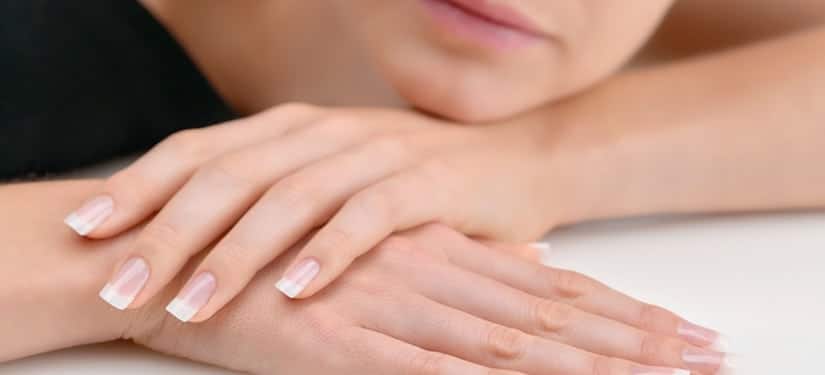Despite its short life, the nails can indicate the overall state of your health–from your nutritional status to an underlying medical condition. Thus, it is also vital that your nails are neat and well-maintained. Below are the do’s and don’ts to take note and make a habit to achieve such that.
Do…
…keep your hands as clean as possible.
Bacteria and fungi are microscopic organisms that can reside in the deep recesses of your nails. If you have a habit of touching your face (which is something not recommended as well), these microbes can transfer to your skin and cause breakouts and acne. The longer your nails, the more extensive surface area available for them to exponentially grow.
So the next time you wash your hands, don’t forget to include your fingernails.
…sterilize nail tools before using.
Don’t let your stuff make your efforts on doing the previous tip futile. If you prefer DIY manicure, sterilize your tools before doing your session by submerging it in boiling water for at least 30 minutes to an hour. While this action may not remove all microorganisms living in your tools, it would significantly reduce their count. For nonmetal tools like emery boards and brushes, replace them every 2-3 months to ensure that they can still do its job.
On the other hand, if you want to have a nail technician do your manicure, ask him or her to sterilize the tools before using it to you, as unsterilized ones can harbor viruses that bring diseases like hepatitis B. Or better yet, bring your own stuff.
…rest your nails from all the nail polish.
With the growing trend of nail art, it is almost enticing to add color to your fingernails. These chemicals, however, decreases its strength and quality which leads to brittleness and jaundice-yellow like appearance.
Before applying a fresh manicure, give your nails an overnight rest. You may also add some moisturizer or lip balm on the cuticles to prepare it for all the treatments it will experience.
…pay attention to your nutrition.
Your nails are made of a type of protein called keratin, which is also responsible for your lustrous hair and clear skin. To keep it that way, you must include food items rich in biotin, along with vitamin E and fish oil. They can be found in nuts, beans, and lean meat. Nutritionists recommend that as much as possible, you must get your vitamins and minerals the natural way–ingesting fruits and vegetables. Supplementation is only a last resort. To be sure, consult one or your physician.
…wear gloves when doing manual labor.
Aside from nail polish, the chemicals and products used every day can wreak havoc to your nails. This includes your makeup (liquid foundation, concealers, unwashed sponges) and cleaning formulas (bleach, dishwashing liquids, floor wax). If possible, opt to wear gloves while cleaning your house to protect your cuticles and nail beds from the harsh ingredients found in these products.
Don’t…
…bite your fingernails.
The worse thing that could happen on the bacteria and fungi lurking beneath your nails is for you to ingest them. And since you have no idea what they are, they can bring diseases that may or may not be lethal.
Aside from that, biting your nails results to frayed and uneven growth, not to mention a weak and brittle nail quality because of prolonged exposure to saliva (or any liquids for that matter). To avoid this, use a base coat polish that tastes and smells unappetizing until you can remove the habit.
…cut the cuticles.
Your cuticles are created to protect the part of your nail that produces new cells. These cells would push forward, causing your nails to grow longer–that is why you have to file them.
Cutting the cuticles would result to a naked protective covering that could cause pain and infections when exposed to different elements. If your cuticles bother you, ditch the specially-made scissors and opt for a washcloth instead. Wash your hands while in the shower then use the cloth to push each back gently. Be careful not do it too brashly as it may result in cuts and open wounds.
…use nails as substitute tools.
Most of us are guilty in using our fingernails as substitute tweezers, wrench, or scissors (Yes, humans are that creative). This act makes your nails prone to breakage and thinning. Use appropriate tools in doing daily tasks. They are made for such things.
…use clippers.
Contrary to what our parents or our grandparents say, clipping your nails is not advisable–unless it is way too long. In this case, use a clipper to cut only HALF of the nail length, then shape the rest using a nail file. The ideal shape for your nails is debatable among beauty circles since most of them think that it should be dependent on the overall effect it could add to your fingers. The general rule is to ensure that you can still use your fingers no matter the shape.
…use acetone-free polish remover and cotton ball when wiping polish off.
Another myth: using a cotton ball soaked with acetone-based polish remover, while effective, can damage your nail health in the long run. Acetone can dry out the skin surrounding the nail (not to mention the nail bed itself) while the microfibers of a cotton ball can adhere to the top without you knowing it. Instead, go for a polish remover that has no acetone and use a washcloth to take off that lovely nail art.
Just like the rest of the body, your nails must be well-taken care of because it has more functions than you give them credit for. And if you love nail art, you can enjoy designing while protecting them at the same time.

